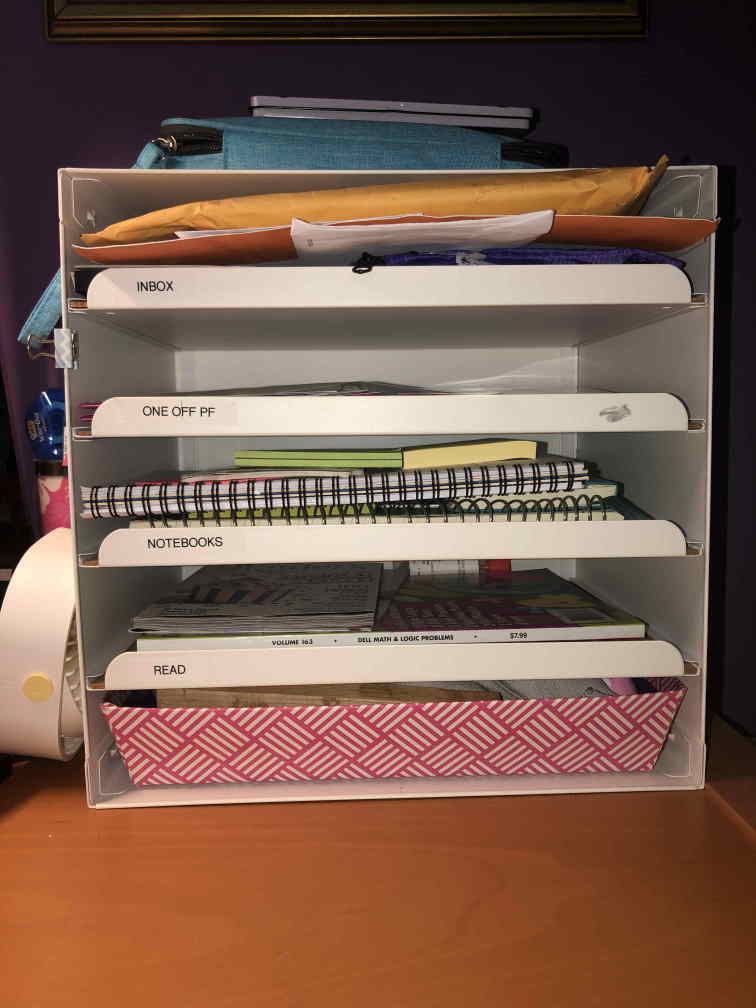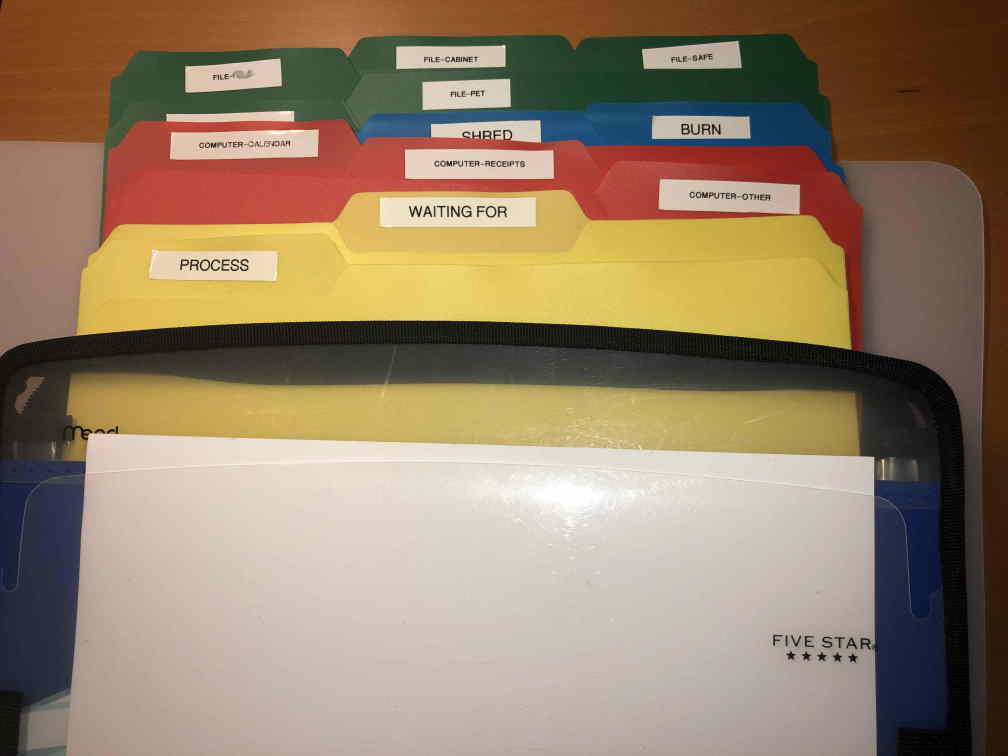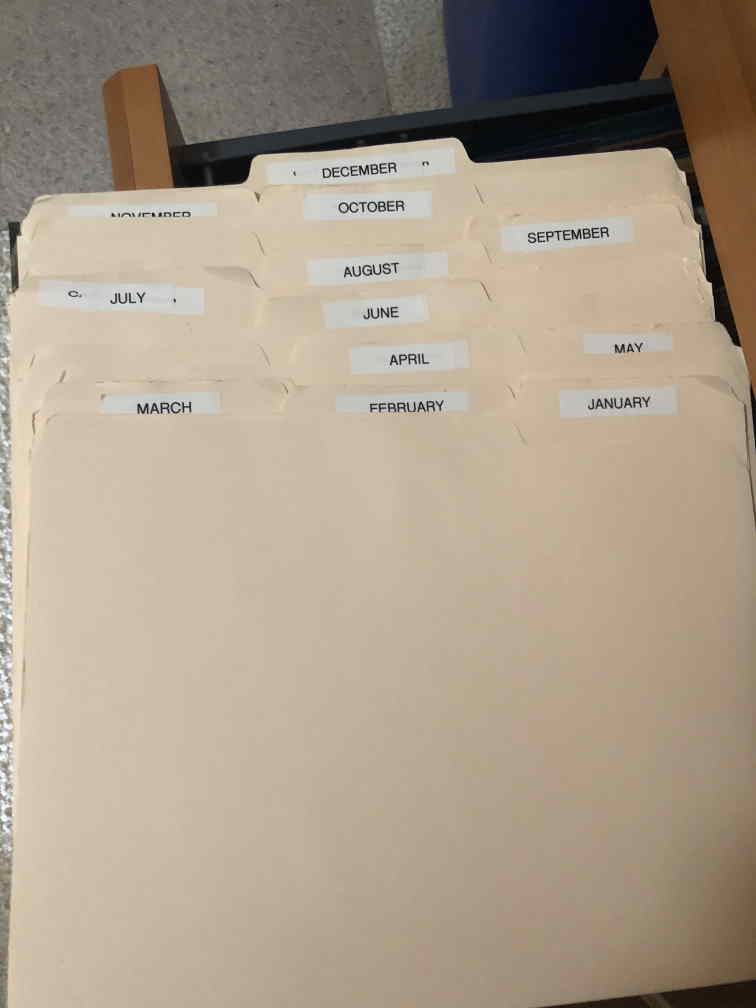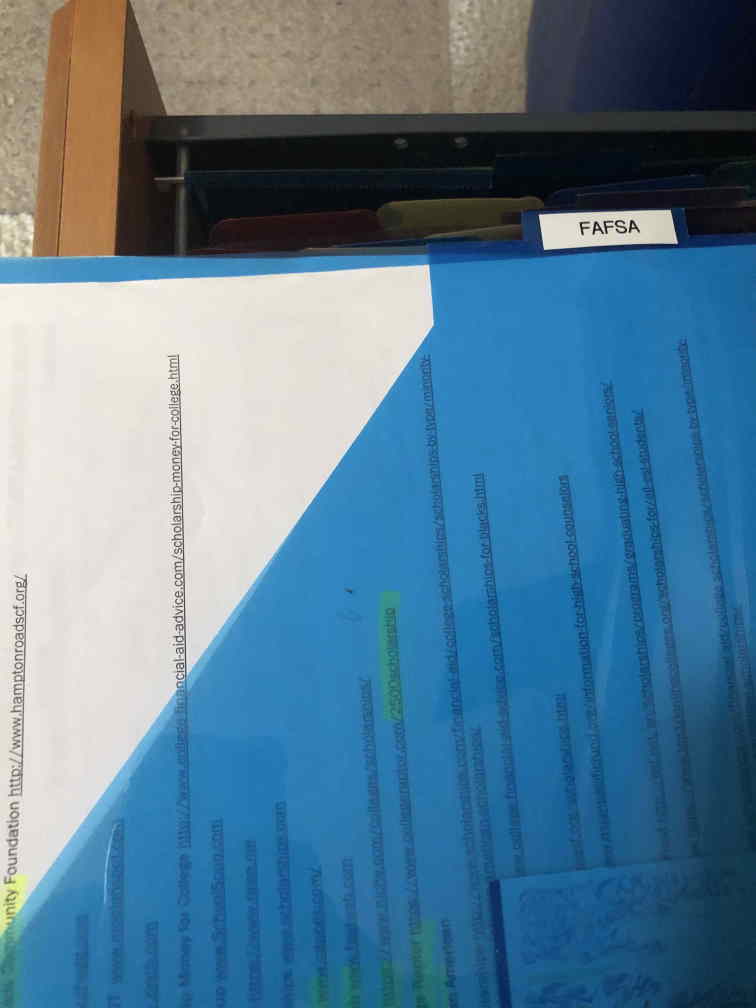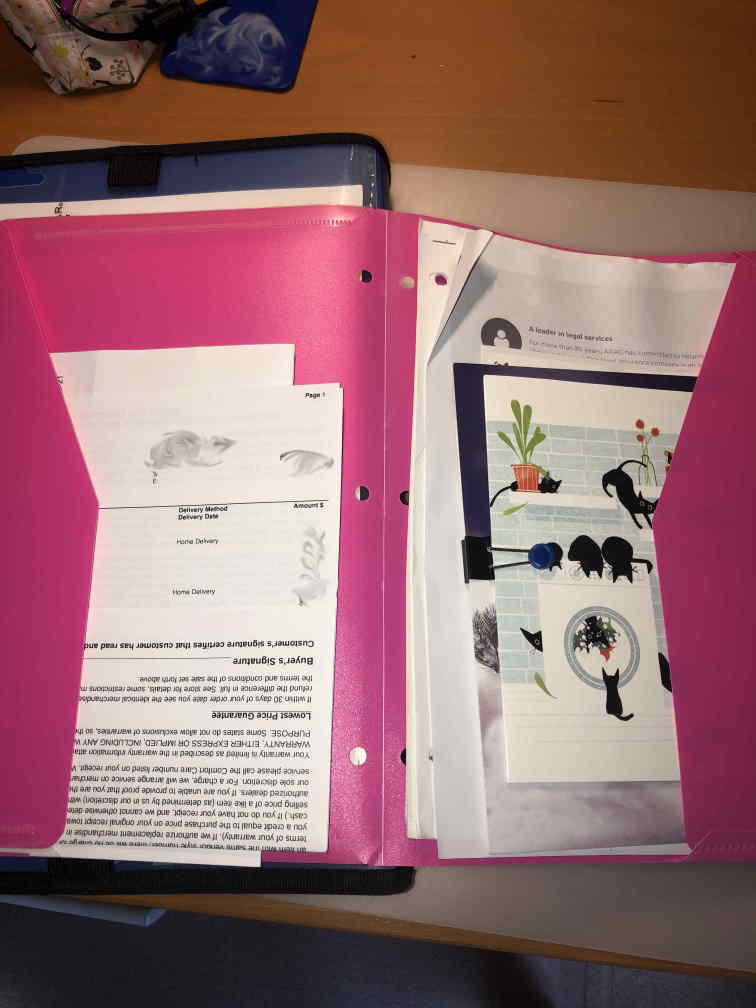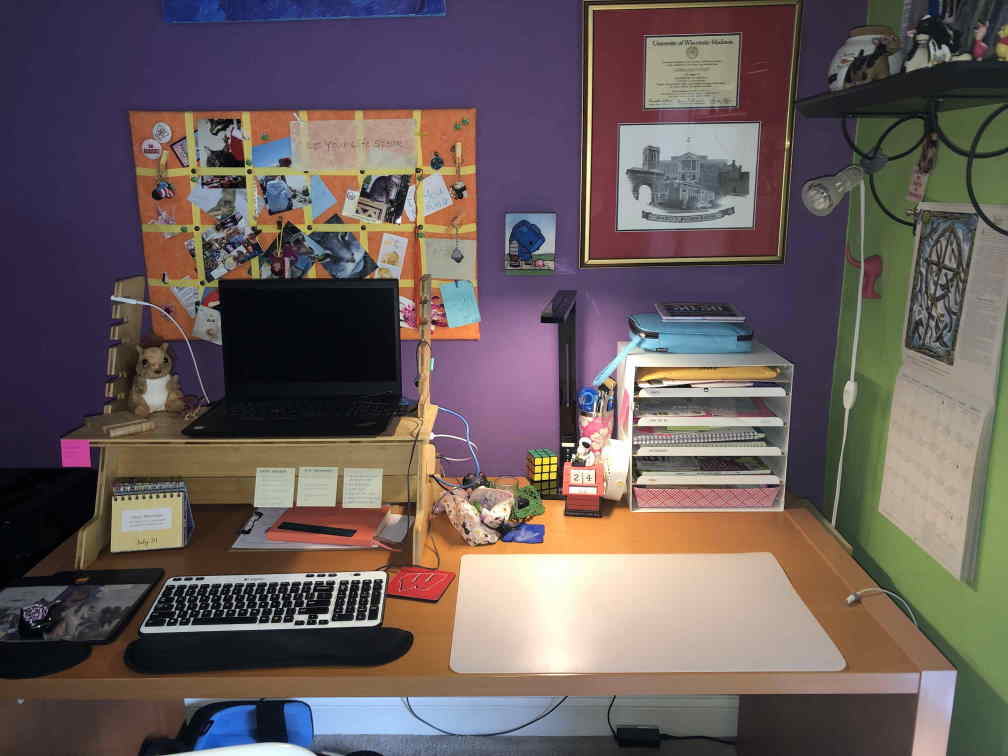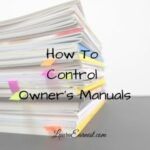In the last article, I talked about how an avalanche of my inbox led me to rethink my system of managing home projects and papers as part of Getting Household Things Done. The last article talks about how I set up my system. Today I will talk about how I use the system, both to process the backlog, and to keep myself current.
Processing
Once I had my system set up in our shared office, I closed the door so that the felines wouldn’t “help” and pulled the entire avalanche into the center of the room. I got it all…everything from the bins, everything on the floor, everything already in the printer stand folders (which I did clip together), every last scrap of paper on my desk.
Then I took the top three inches and sat at the desk. The pile on the floor was about eighteen inches tall, and from what I found while processing it, had been started about two years before. (I found two of the rabies shot certificates in there – which are administered every twelve months).
For each item, I assessed each according to what I had already set up. If it was office supplies, a notebook or a periodical, it went right into the document box.
If it was trash or recycling, it went into the folder in my sorter. If it needed computer action or long-term filing, it went into the appropriate folder in my sorter.
If it was an item I needed to follow up with in the future, it went into the tickler folder.
Short Term Projects
For some things, they belonged in the short-term project file. For instance, all of my daughter’s financial aid paperwork needs to be kept together, because it gets referenced throughout the year, as well as needing to be updated every January. So I grabbed a tabbed poly binder folder, labeled it, and put all of the paperwork in there. Then I made an entry in my task manager: “Update FAFSA”. I gave the task a due date of January 15 and tagged it with #PF (project file) indicating that the papers are in the short-term file.
This whole folder was then put in the hanging folders, tab up so I could find it.
One-Off Tasks
There were some things that were a single piece of paper that required a single action. I didn’t want to lose sight of them in the hanging files as a short term project, but they needed to have action taken. An example of this were the rabies certificate I needed to scan and send to the city for licensing.
I pulled a portfolio folder and put the papers inside. My task list entry was “Renew cat license” which I made due the next week and tagged with both #PF and #oneoff. This combination indicated to me that the papers were in the folder, which was then put in the second tray of the document box.
I also put all letters I needed to answer in the folder as well, and made appropriate task list entries.
Too Much Stuff
As I was working through the large pile, I had the system to process it. But the pile was so big I needed to do some stops in the middle. This occurred when one of the folders in the sorter or the document box tray filled up.
Notebooks
The notebook tray filled up first. I decided I would keep two “thinking” notebooks, or books that I use when I am problem-solving. One is letter sized, and one is statement sized. I also kept two sticky note pads in there: the 3×3 as well as the lined paper 4×6. Everything else was put in the common supply bins in our shared office.
Periodicals
The periodicals filled up fast as well. I found that I had almost two years worth of back issues for one of them. I gave myself permission to keep the most recent issue. Everything else was recycled. I will admit this was somewhat painful, because of a healthy dose of FOMO. But I realized that if I hadn’t read them by now, I wasn’t going to.
I also decided that one source of the periodicals, namely IEEE (a professional organization I belonged to), was overwhelming me with things I never asked for – 6 to 8 magazines a month. I made a task to re-assess the volume and relevance of information I was getting from them, which ultimately led me to let my membership lapse.
Trash, Recycle and Shred
The trash, recycle and shred folders in the document sorter also filled up quickly. As the folders became too large, I took a break from processing and took care of them.
As a side note, I had to empty the shredder bin twice during this process.
Long Term Filing
The four filing folders in the sorter were also filed midway. I had set them up based on where the items would be filed: the pet folders (one for each pet), my daughter’s box of memorabilia, the fire safe, or the general filing cabinet.
An Overview of my Specific Mess
Here are the types of things that were found in the pile, and what were done with them.
- Medical/dentist appointment cards. If the appointment hadn’t passed, it was put in the “Computer – Calendar” folder in the sorter. Otherwise it was put in the Shred folder in the sorter.
- Rabies shot certificates, receipts showing exams and shots and pet licenses. These were put in the “File – Pet” folder in the sorter.
- Report cards. These were put in the “File – Daughter” folder to be added to my daughter’s memorabilia box.
- Gas receipts. I track the mileage from every tank of gas. These were all put in the “Computer – Receipts” folder in the sorter.
- Offer letter for my full-time position. I transitioned from part time to full time work in 2019. The offer letter with my salary and benefits was put in the sorter under “File – Cabinet”.
- My daughter’s expired passport. This was returned to us when her passport renewed, but for some reason didn’t make it into the safe with the current one. This was put in the “File – Safe” folder in the sorter.
- My daughter’s graduation pictures. These needed to be scanned for preservation. These were put in the “Computer – Other” folder in the sorter.
- 401K paperwork. Getting the money out of the 401K for teachers administered by Virginia has proved to be complicated. Any papers I found that were related to this process were put in a tabbed binder divider, labeled 401K and put in the short-term projects. An entry with “Transfer Teacher 401K” was put in my task list with the tag #PF.
- The March birthday cards. Everyone on my husband’s side of the family has a birthday in March or early April. I make one trip to the card store, usually in January, and buy all 15 of the cards. These were all put in their respective envelopes with the person’s name and address, and underneath where the stamp would go, the date they needed to be mailed. These were all put in the March and April folders of the tickler.
- Grocery summaries. I do grocery pickup at the local store. Every time they have to substitute something they put it on a printout. For some reason I had almost a dozen of these in the pile. These were put in the “Trash” folder in the sorter.
- The receipt for the yearbook. My daughter’s high school yearbook was delayed almost six months past graduation. The receipt was put in the “Waiting For” folder in the sorter. This folder gets reviewed at least once a month and any actions that are needed entered into the task list as the paper gets moved either to the short-term or one-off parking.
- Recipe booklets. I like trying new things. But I don’t keep cookbooks or recipe books around for one or two recipes. So I have to spend time going through these books deciding if there is anything I want to pull into my recipe file. This takes time, so I was not willing to stop working through the pile in order to do this. These recipe booklets went into the “Process” folder.
It took me about three hours to get through the pile. But in the end, everything was where it needed to be, and if necessary, a task list entry made so I wouldn’t forget about it.
Weekly Processing
Once the backlog was cleared, I was able to think about doing regular processing.
I set up a task to clear the inbox every week, using the sorter and the short-term files. This generally takes about 5 minutes to put everything into the sorter.
I also added a monthly task to handle anything left stuck in the sorter. This is usually long-term filing and computer tasks. These take about 15-30 minutes every month, depending on the complexity of anything in the process folder.
I am glad that I took the time to clear out the backlog and get a handle on the household paperwork. Now I don’t have to worry if I am going to forget to do something or lose the papers needed, because it is all handed by the mission control.


